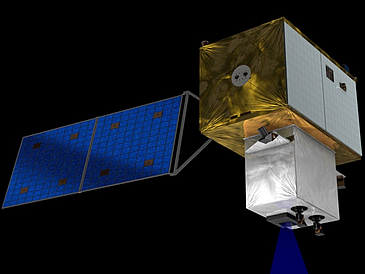Bremen environmental physicists are to be congratulated on scoring an outstanding achievement: at a recent meeting of the advisory committee on the “Earth observation” program acting for the European Space Agency, the Bremen “Carbon Monitoring Satellite” (CarbonSat) concept was selected for a feasibility and definition study. Following an intensive scientific and technical examination, the Bremen space mission concept was chosen from among a total of 30 proposals. CarbonSat may therefore be one of the eight satellites destined to be part of the ESA’s Earth Explorer Program.
The objective of CarbonSat is to carry out high precision mapping of the global distribution of the greenhouse gases carbon dioxide (CO2) and methane (CH4) in the atmosphere. These measurements will subsequently make it possible to compile comparative studies of the distribution and concentrations of these greenhouse gases worldwide. CarbonSat will provide the first exhaustive surveys of small-scale sources of emissions around the globe and therefore make a significant contribution towards being able to distinguish between natural and man-made emissions.
CarbonSat would then become an important component of a global monitoring system for greenhouse gases. The data gathered could be made available to scientists, government agencies and meteorologists around the world, and help provide answers to important questions regarding the effects of greenhouse gases – it could also be used to monitor and evaluate future greenhouse gas emissions.
Along with CarbonSat, the ESA selected one joint contender for further examination. On the basis of feasibility studies which will begin at the end of 2011, the ESA will then decide which of the two concepts are destined to be sent into orbit in 2018. The CarbonSat misson concept was developed under the scientific leadership of Dr. Heinrich Bovensmann from the Institute of Environmental Physics at the University of Bremen in close cooperation with an international team of experts. Their proposal was submitted to the ESA in June this year. The technical aspects of their mission concept were worked out in cooperation with OHB System AG (satellite systems) and Kayser-Threde (sensors) and the Bremen DLR Institute for Space Systems. The project builds on the experience gathered since 2002 by the IUP (leader: Professor John P. Burrows) in satellite-aided tracking of greenhouse gases with the sensor SCIAMACHY and the highly precise evaluation algorithms developed by the IUP (leader: Dr. Michael Buchwitz). Last not least, the working group led by Prof. Justus Notholt was also involved with their very precise ground-based reference measurements of greenhouse gases.


